Glucosamine, Chondroitin, MSM and Hyaluronic Acid
KNEE JOINT
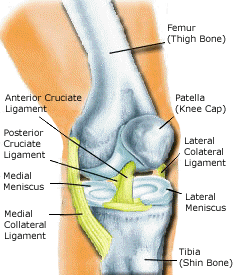
Everyone old enough to walk appreciates the value of flexibility and ease of movement. Unfortunately many of us take such good things for granted. A famous folksinger sang, "You don't know what you've got till it's gone." That's certainly true for millions Americans who live with stiff and uncomfortable joints.
Fortunately there are a number of nutrients available that provide the vital components of healthy joint structure and function and ease of mobility.
These nutrients are referred to as “chondroprotective agents,” and include glucosamine and chondroitin, which supply the raw material necessary to produce new cartilage, and may even help rebuild worn cartilage. Other chondroprotective nutrients and herbs, like Cetyl Myristoleate, MSM, and Boswellin, work synergistically with glucosamine and chondroitin and further support normal joint function.
To understand how chondroprotective agents work, one must first understand how joints work. The key element in human joints is articular cartilage, the shock-absorbing tissue that connects two bones together and allows pain-free movement.
Articular cartilage is comprised of two different molecules, collagen and proteoglycans, with the remainder composed primarily of water (65-85%). Collagen, a protein that binds tissue together, provides elasticity.
Proteoglycans, composed of sugars and protein, absorb water, which provides lubrication and resiliency, nature's shock absorber for your joints. Both compounds are produced by chondrocytes, caretaker cells responsible for the formation and maintenance of cartilage.
A deficiency in any one of the above constituents will increase the likelihood of wear and tear on articular cartilage, which can eventually lead to compromised joint function. Glucosamine and chondroitin are safe, natural and effective nutrients that support healthy joint function by supplying the materials needed to produce collagen and proteoglycans.
GLUCOSAMINE
Glucosamine is composed of glucose (a sugar) and glutamine (an amino acid). It is utilized by chondrocytes to form glycosaminoglycans (GSG) and proteoglycans (PG). Both of these constituents attract and bind water into cartilage, increasing resiliency.
Research indicates that glucosamine may actually help your body repair damaged or eroded cartilage. A number of studies have been conducted on glucosamine sulfate and glucosamine hydrochloride, with a preponderance of positive results.
Glucosamine sulfate is considered the more effective of the two. One study from the University of Liege in Liege, Belgium studied the effects of glucosamine sulfate on 212 patients with knee osteoarthritis. Participants took either 1,500 mg glucosamine or a placebo once daily for three years.
The study compared joint-space width at enrollment, one year, and at the study’s conclusion. The 106 patients on placebo had a progressive joint-space narrowing, while participants taking glucosamine experienced no significant joint-space loss, indicating glucosamine may beneficially modify cartilage structure.3
A study published in the journal Osteoarthritis and Cartilage in 1998 investigated the in vitro effects of glucosamine sulfate on proteoglycan and collagen production by chondrocytes taken from osteoarthritic articular cartilage. The results showed “a statistically significant stimulation of PG production by chondrocytes from human osteoarthritic cartilage cultured for up to 12 days in 3-dimensional cultures.” 4
Another study from Italy enrolled eighty inpatients with established OA. They received either 1,500 mg of glucosamine sulfate or placebo daily for 30 days. The patients treated with glucosamine sulfate experienced a reduction in symptoms almost twice as large and twice as fast as those receiving placebo.
Researchers also used electron microscopy of patient’s articular cartilage to support this hypothesis. Patients who received glucosamine sulfate showed a picture more similar to healthy cartilage. The researchers concluded that glucosamine sulfate tends to rebuild damaged articular cartilage and restore articular function.5
CHONDROITIN
Chondroitin is classified as a glycosaminoglycan. It bonds with collagen to form the basis of connective tissue. Chondroitin helps attract fluid into proteoglycans, thereby bringing nutrients into cartilage and providing shock absorption.
While glucosamine helps manufacture and maintain cartilage, chondroitin keeps cartilage from becoming malnourished. Chondroitin works synergistically with glucosamine, and these two nutrients form the basis of most joint health supplements on the market today.
A 6-month randomized, multi-center, double-blind, double-dummy study published in 1996 compared the effectiveness of chondroitin versus a popular non-steroidal anti-inflammatory drug (NSAID) in patients with knee osteoarthritis (OA). One hundred and forty-six patients with knee OA were recruited and separated into two groups; an NSAID group and a chondroitin sulfate (CS) group.
The NSAID group was given the NSAID and a placebo for the first month, then placebo alone for months 2-3. The CS group was given the NSAID and CS for the first month, and then CS alone for months 2-3. Both groups were then given 1200mg of CS for months 4-6.
Patients treated with the NSAID showed prompt and plain reduction of clinical symptoms, which, however, reappeared after the end of treatment; in the CS group, the therapeutic response appeared later in time but lasted for up to 3 months after the end of treatment. CS seems to have slow but gradually increasing clinical activity in OA; these benefits last for a long period after the end of treatment.
MSM
MSM is being touted as a magic bullet for treating arthritis pain - just as its mother compound, DMSO, was in the 1960s. What?s the true story behind these compounds? Can they help - or hurt?
After James Coburn won an Oscar for Best Supporting Actor this year, he credited the supplement MSM for helping him overcome the pain and disability of rheumatoid arthritis. MSM, he said in many interviews, made it possible for him to work.
MSM (which stands for methylsulfonylmethane), was already selling briskly, and with added publicity from Coburn, sales have boomed. Hundreds of vendors market it for a range of ailments including pain and/or inflammation from rheumatoid arthritis (RA), osteoarthritis (OA), fibromyalgia and gout; and to correct constipation, relieve allergies, control stomach acidity and - believe it or not - stop snoring.
However, there?s not much on which to base these claims: There are numerous testimonials, but little hard scientific data on MSM?s safety or benefits. ?How can we say if it?s safe or not - much less, if it works?? asks David Pisetsky, MD, chief of rheumatology at Duke University Medical Center and an arthritis researcher. ?We just don?t know enough about it.?
STANLEY JACOB, MD
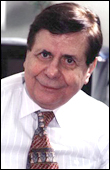
Stanley Jacob, MD, the doctor who developed MSM, acknowledges that the ?arthritis cure? claims are over-hyped. While Dr. Jacob stands by the many benefits of MSM, he is quick to point out that it?s not a ?cure.?
?I don?t know of a single disease that MSM cures. We are not curing arthritis - I want that understood,? says Dr. Jacob. He says MSM?s major benefit for those with OA and RA is pain relief: It hasn?t been shown to repair or preserve cartilage or to modify or stop progression or joint destruction caused by autoimmune types of arthritis, and its effects last only as long as the supplement is taken.
Some rheumatologists are suspicious of MSM because of its relationship to DMSO - a substance that has stirred controversy since the 1960s. MSM is a sulfur compound plentiful in fresh fruits and vegetables, milk, fish and grains, but quickly destroyed when foods are processed. Vendors say MSM boosts sulfur levels; they also say it is a ?natural? product, but the supplement being sold is actually a chemical compound made from DMSO.
What?s the real story on MSM? We had to look at the history of DMSO to find some answers.
The Mother Compound
DMSO (which stands for dimethyl sulfoxide) is a versatile compound with many uses and a checkered past.
It is both a prescription drug and an industrial solvent. It?s formed as a byproduct of wood pulp processing; its use is determined by the quality: You will find industrial-grade DMSO in paint thinner and antifreeze, and medical-grade DMSO in many medical laboratories. Its industrial usefulness comes from its remarkable solvent qualities, and much of its medical value from its ability to transport other substances through cell membranes. It is also reported to have anti-inflammatory and antioxidant properties.
Medical-grade DMSO is safe, and is widely used in medical processes. DMSO is the chemical used to protect human tissue (such as bone marrow, stem cells and embryos) when frozen for storage. It?s also an FDA-approved prescription drug (called Rimso) given by catheter for interstitial cystitis, a painful bladder condition.
Dr. Jacob says thousands of scientific papers have been published about DMSO?s chemistry, including test tube, animal and human studies. Some have shown DMSO can relieve muscle and joint pain; reduce inflammation; soften collagen to relieve scleroderma symptoms; help heal skin ulcers caused by diabetes and scleroderma; and relieve blood vessel constrictions common to Raynaud?s phenomenon. Other research has suggested it may help prevent brain damage after stroke or head injuries. And it appears to have few side effects, even at very high dosages.
DMSO is approved for use in many other countries for arthritis and related conditions. In fact, a new drug, combining DMSO with the nonsteroidal anti-inflammatory drug (NSAID) diclofenac is being considered by the FDA for approval as a prescription topical NSAID (see ?A Stronger Topical NSAID?).
SHOULDER JOINT

So why the controversy?
DMSO: Why the Controversy?
The controversial history of DMSO begins with Dr. Jacob, a Harvard-trained surgeon with an endowed chair at Oregon Health Sciences University (OHSU), where he has a special clinic for the use of DMSO.
In the early 1960s, Dr. Jacob headed the organ transplant program at OHSU and was looking for a substance to preserve organs being stored for transplant when he stumbled across DMSO. Further research uncovered DMSO?s medical uses, and it was soon being hailed as a wonder drug.
But in the mid-?60s, DMSO fell out of favor with the FDA during its testing phase when an animal study, using high doses, showed changes in the lens of the eye. (There have, however, been no reports of problems with eyes of participants in human studies.)
DMSO?s ability as a solvent to transport molecules across cell membranes was also a potential problem. It meant that when used topically DMSO could carry anything - including toxins - straight through the skin and directly into the body.
DMSO also has a harmless but unpleasant side effect: Taken internally or even used externally, it causes a bad taste in the mouth and makes those who use it smell like garlic or oysters.
And so medical-grade DMSO faded from the consumer marketplace. Its reputation was further sullied as reports of bad reactions from arthritis patients who had used industrial-grade products bought at roadside stands or gas stations came to light.
Nonetheless, DMSO was approved in 1978 as the prescription drug Rimso for interstitial cystitis. Because medical-grade DMSO is an approved prescription drug (although only for one use), it can?t legally be sold over the counter or as a dietary supplement. Therefore, most of the DMSO people have been trying for the past 30 years has been the same quality used in industrial solvents - in other words, unfit for human use - and doctors have been rightly suspicious of these products.
Enter MSM
Meanwhile, as Dr. Jacob and other researchers at OHSU continued to study DMSO, they found that 15 percent of DMSO was broken down into another sulfur compound in the human body. The compound, which they called MSM, had many of the helpful qualities of DMSO, with some distinct advantages: It lacked the distinctive oyster-garlic smell; it didn?t have the sullied history of DMSO; and it could be sold directly to consumers as a dietary supplement.
But it also lacked research: Unlike DMSO, which has many published studies and evidence of safety, there was little scientific evidence for or against MSM. Animal studies found MSM eased RA-like symptoms in mice, and it prolonged life for mice with a condition similar to lupus nephritis.
But even now, there are no scientifically accepted human studies, and what works in animals doesn?t always work in humans. Dr. Jacob and others have conducted human studies that they say show MSM relieves the pain of OA and other conditions.
However, these studies are not published in peer-reviewed medical journals, and there is a potential conflict of interest: Dr. Jacob also serves as medical director for a company that produces and sells MSM.
Dr. Jacob contends MSM does not need research because the DMSO studies can be applied to this breakdown product. He also says MSM is safe, citing animal toxicology studies from manufacturers.
What Rheumatologists Say
The rheumatologists we interviewed consider MSM an unproven remedy. So far, MSM shows most promise as a pain reliever. As for DMSO, rheumatologists don?t know much about the scientific evidence and were skeptical, and patients said they don?t like the oyster-garlic smell.
A handful of rheumatologists are cautiously recommending MSM. Kenneth Nyman, MD, a rheumatologist and internal medicine specialist in Tarzana, Calif., recommends MSM for OA and for pain, but not as a substitute for prescription arthritis drugs. ?My patients with aggressive RA need aggressive treatment with proven disease-modifying drugs,? he says. ?I use MSM in conjunction with those drugs.? (Dr. Nyman has no financial involvement in MSM.)
But some physicians are concerned that MSM may interfere with other drugs and cause complications. ?MSM is a real mystery,? says Ronenn Roubenoff, MD, a rheumatologist and nutritional expert at Tufts University/ New England Medical School. Sulfur compounds, like those in MSM, are ?very active in the body and can have powerful effects,? he says. ?We really don?t know what the effects will be over time,? he says.
?MSM is worth clinical trials,? says Dr. Roubenoff. ?We need to keep an open mind, and not just reject things out of hand. But we also shouldn?t give up the scientific method just because there is a lot of hype about a product. It needs to be tested.?
Bottom line: MSM may be safe, but there is no convincing scientific evidence it helps arthritis. And DMSO may help with a number of arthritis-related conditions, but it is not safe for consumers to use products available on the open market.
Good Advice: MSM and DMSO
DMSO and MSM are both taken several ways: orally; applied externally as lotions or gels; given intravenously and injected.
If you decide to experiment with these substances, be sure to tell your doctor and ask your doctor to monitor you for any adverse effects with regular blood, kidney and liver function tests.
Don?t stop taking disease-modifying medication if you have RA or another autoimmune disease.
Consult your doctor if you are taking heparin or other blood-thinners, including herbs and aspirin, because both substances may have some blood thinning effects.
Good Advice: MSM
Buy MSM only from an established company that you can be sure will stand by its products - and be wary of companies making ?miracle? and other hyped claims.
Start with a low dosage of 500 milligrams (mg) or less twice a day and gradually increase the amount until you notice some effect. Most sources suggest 1,000 mg (1 gram) twice a day. MSM is most often taken in capsules or dissolved in a liquid.
Be patient. But if you don?t see any difference after two months, you may never - and it may not be worth continuing to expose yourself to unknown risks.
Tell your doctor if you get diarrhea, stomach upsets or mild cramps; these side effects are common, especially at higher doses. Lowering the dose may stop these symptoms.
Good Advice: DMSO
Don?t buy DMSO on your own: Ask your doctor to find a medical-grade source. Almost all DMSO available to the public is industrial grade - including most veterinary DMSO and products sold in health food stores and on the Internet - and may not be safe for medical use.
Do not try DMSO without a doctor?s help. It?s a powerful transdermal agent, which means it can carry anything that touches it through your skin and into your body.
If you have a reaction, stop using the product and see your doctor. Some people may have an allergic reaction, skin irritation or itching from DMSO applied externally.
Be aware DMSO has been known to cause bad breath or a bad taste in the mouth (like garlic or oysters) among those who use it, whether it?s taken orally or applied to the skin.
Judith Horstman, author of The Arthritis Foundation?s Guide to Alternative Therapies (Arthritis Foundation, 1999), is a contributing editor to Arthritis Today. She writes regularly about alternative and complementary therapies.
--------------------------------------------------------------------------------
A Stronger Topical NSAID?
Why not get the pain medicine right to the joint that hurts - and avoid unwanted systemic side effects from pills? Soon, there may be a drug available in the United States to do just that.
A Canadian company has applied for FDA approval for what would be the first prescription topical NSAID to be marketed in the United States.
Called Pennsaid (for penetrating NSAID), the drug uses the penetrating properties of DMSO as a vehicle to carry the prescription nonsteroidal anti-inflammatory drug (NSAID) diclofenac through the skin to joint, says Peter Block, corporate communications director for Dimethaid, the Ontario-based company seeking to market the drug.
(Over-the-counter salicylate, or aspirin-like, creams are already available. Dimethaid says this prescription drug uses a stronger NSAID, and that the DMSO will make it penetrate deeper.)
Hyaluronic Acid
Hyaluronic acid, or HA, is a naturally occurring polymer found in every tissue of the body. It is particularly concentrated in the skin (almost fifty percent of all HA in the body is found in the skin) and in synovial fluid.
The body's hyaluronic acid content decreases with aging, due either to reduced synthesis or as a result of being redistributed in tissues. Both mechanisms decrease the availability and capability of HA to maintain healthy skin and joints. HA is composed of alternating units of n-acetyl-d-glucosamine and d-glucuronate.
Pure Encapsulations HA is derived from rooster comb. HA may also be derived from bacterial fermentation but this form is not considered to be as pure or have the safety profile of rooster comb HA.
Some forms of rooster comb HA consist of large molecular weight compounds ranging in size from 500,000 to 6,000,000 daltons. Because this is too large to be absorbed in the intestines, HA found in Pure Encapsulations formula undergoes a sophisticated, patent-pending enzymatic process that alters the molecular weight of the material but not the chemical composition.
The final result is an easily absorbed HA polymer with a molecular weight of 5,000 daltons. This polymer's functions include attracting and retaining water in the extracellular matrix of tissues, in the layers of skin, and in synovial fluid. For skin cells, this is essential for proper cell-to-cell communication, hydration, nutrient delivery, and waste and toxin elimination.
HA also appears to support the skin by promoting healthy turnover and renewal of keratinocytes, moderating the appearance of fine lines and age spots. For joints, HA is especially supportive of healthy lubrication and shock absorption. Furthermore, in vitro studies indicate that HA modulates prostaglandin production, providing additional support for joint function.
In an animal study, low molecular weight HA demonstrated the ability to be absorbed orally. Subjective evaluations conducted by scientists at a Japanese university involved 96 individuals. The reports suggest an enhancement of skin and joint health using low molecular weight HA. A number of anecdotal and preliminary results also indicate a positive effect on skin and joint health.
Pure Encapsulations low molecular weight Hyaluronic Acid derived from rooster comb provides support for a healthy and youthful appearance by hydrating and smoothing the skin in addition to moderating the appearance of fine lines and age spots. Hyaluronic acid also supports joint function and comfort by promoting healthy synovial fluid composition and joint lubrication.
Hyaluronic acid occurs in abundant amounts in many of the places people with connective tissue disorders have problems such as the joints, the eyes, the skin and heart valves. Hyaluronic acid is needed to cushion and lubricate joints, eyes, skin and heart valves.
People with connective tissue disorders and related features all seem to have abnormalities of hyaluronic acid. In every study I found that analyzed hyaluronic acid levels in people with connective tissue disorders or related disorders, when compared to controls they always had hyaluronic acid abnormalities.
HA is influenced by nutrition and other environmental factors. Many of the features of premature aging syndromes and connective tissue disorders are also known to be caused by nutritional deficiencies, and not surprisingly these are often the same nutritional factors that influence the manufacture of hyaluronic acid. My theory is that this is not all one big coincidence. Logically, it is more likely to be a predictable sequence of causes and effects.
Hyaluronic acid is being used commercially or experimentally to correct a large portion of the problems found in connective tissue disorders such as fractures, eye disorders, poor wound healing and prematurely wrinkled skin. It would be highly logical to consider the possibility that hyaluronic acid works to correct these problems because defects or deficiencies of hyaluronic acid are what cause these problems in the first place.
Perhaps controlling or optimizing the environmental factors, such as modifying ones diet, to optimize hyaluronic acid levels would be helpful in treating many inherited connective tissue disorders and premature aging syndrome.
Hyaluronic acid, or commercial preparations containing hyaluronic acid, are in use or being studied to be used, to prevent, treat or aid in the surgical repair for many the types of problems people with connective tissue disorders tend to have such as:
Fractures
Hernias
Glaucoma
Keratoconus
Detached retinas
Osteoarthritis (HA injections are the new breakthrough treatment for this condition)
Muscle contractures
TMJ
Prevents scarring
Vocal cord insufficiency
Wrinkled skin
Cartilage damage
Wound healing
Ligament Healing
Hyaluronic acid becomes abnormally elevated in the skin of swine who have zinc deficiencies. Magnesium is needed for hyaluronic acid synthesis.
Perhaps a lack of magnesium is one of the factors in some connective tissue disorders. Magnesium supplementation is an established treatment for many of the symptoms of connective tissue disorders, such as fibromyalgia, mitral valve prolapse and contractures. (See my related topics on Magnesium and Mitral Valve Prolapse.)
Ascorbic acid can degrade hyaluronic acid. Estrogen treatment increases activity of hyaluronic acid. Estrogen is known to increase utilization of nutrients like magnesium and zinc - nutrients that are known to affect hyaluronic acid levels. Cigarette smoke is known to degrade hyaluronic acid.
Posted by philcutrara1
at 8:53 AM EDT
Updated: Sunday, 5 June 2005 9:33 AM EDT









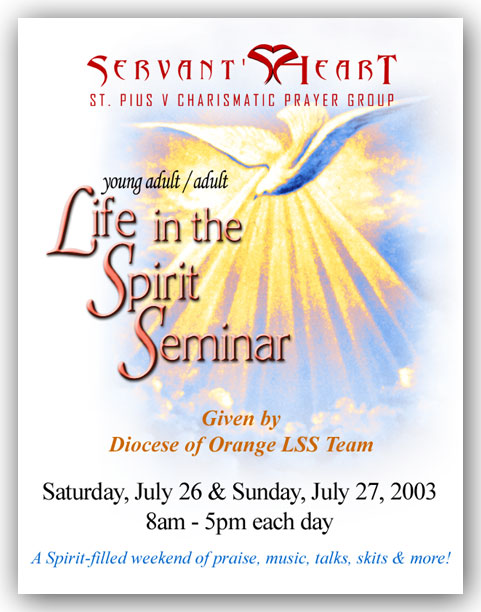

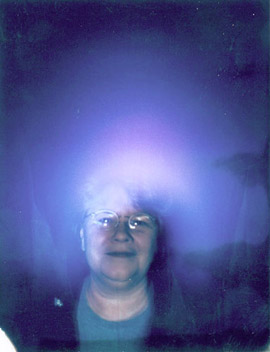
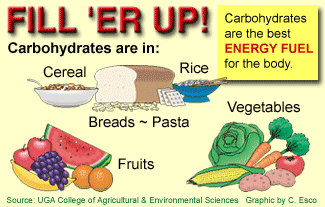

 In the Republic of Georgia, formerly part of the Soviet Union, it is not unusual for people to live beyond 100 years of age as active members of society. When Russians marry they propose a toast to the bride and groom gifting them Georgian longevity. What is their secret?
In the Republic of Georgia, formerly part of the Soviet Union, it is not unusual for people to live beyond 100 years of age as active members of society. When Russians marry they propose a toast to the bride and groom gifting them Georgian longevity. What is their secret? 